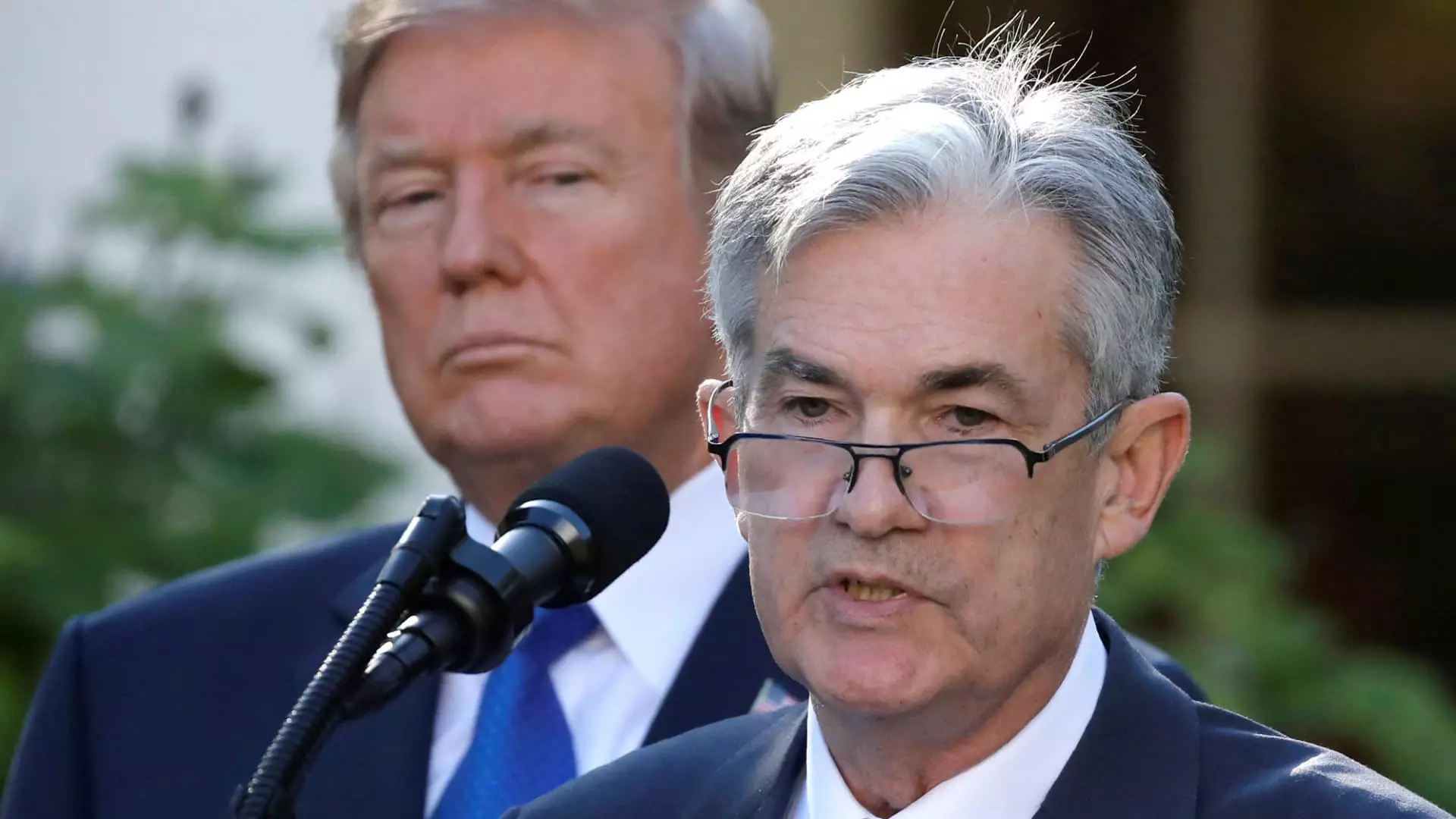As political tensions simmer, the Federal Reserve, led by Chairman Jerome Powell, finds itself at an uncomfortable crossroads. While the winds of discontent whip through the realm of politics—with former President Donald Trump directing pointed barbs towards Powell—the financial landscape remains largely unchanged. At the culmination of a recent two-day meeting, it appears the Fed is poised to keep interest rates steady, much to the chagrin of struggling Americans and businesses alike. The futures market seems to echo this sentiment, offering virtually no anticipation for an imminent interest rate cut.
Trump’s criticisms hinge on a single truth: the current federal funds rate is burdensome. Borrowing costs are inching higher, affecting not only corporations but also everyday consumers grappling with escalating expenses. The decision to maintain this rate translates into significant pressure on an economy already reeling from inflation and uncertainty. As Matt Schulz of LendingTree aptly points out, “Most Americans don’t have a ton of wiggle room and today they have even less.” This statement captures not just an economic condition, but also a growing frustration with institutions that seem detached from the reality of American lives.
The Financial Impact on Consumers
Credit card debt exemplifies just how much the Federal Reserve’s policies shape the economic landscape for individuals. With average annual percentage rates hovering above 20%, many Americans are in a precarious position, trapped in a cycle of high debt with little hope of escaping it anytime soon. Often tied to the Fed’s actions, these rates represent a relentless squeeze on American wallets as inflation bites into already-meager budgets.
Even though consumers feel helpless in the face of these challenges, Schulz offers a glimmer of hope by suggesting they harness the power of good credit to find better deals. Yet, the question looms: should consumers really need to fight tooth and nail for a fair shot at financial stability? The current economic scenario points more toward an unsustainable system rather than the empowerment of citizens.
Moreover, the impact of high borrowing costs extends beyond credit cards. Mortgage rates, closely linked to economic indicators and Treasury yields, have remained stagnant. This stagnation has rendered the housing market—already grappling with supply issues—virtually inaccessible to many would-be buyers. Despite Powell’s tenure as chair, it seems the fragility of this market remains a source of despair for those looking to secure their American dream.
The Ripple Effect of High Rates
The effects of a static interest rate echo far beyond credit cards and housing. Auto loans, despite being relatively insulated from the Fed, still see growing pressure due to rising vehicle prices precipitated by trade policies that some may argue have been shortsighted. With car payments rising alongside inventory scarcity, many households are grappling with monthly obligations that strain their finances further. Currently, the average rate for a five-year new car loan stands at 7.24%, signaling a ticking time bomb for families already under financial distress.
And yet, even as consumers seek refuge in thriftiness, whether through consolidating debts or shopping around for better rates, they face an uphill battle. The financial system appears rigged against the average person, who must navigate a treacherous landscape while also confronting the very institutions that are meant to safeguard their financial well-being.
Students Stuck in the Crossfire
The landscape for student loans highlights yet another layer of complexity. Federal student loan rates may provide some reprieve, remaining relatively stable owing to their annual fixation based on Treasury auctions. For many students, the current rate of 6.53% may not seem alarming at first glance. However, as entry-level wages struggle to keep pace with inflation, borrowers face a reality that is far harsher than it appears on paper.
Moreover, the tightening grip on loan forgiveness options adds a troubling layer to an already precarious financial situation for graduates. Many young people owe their futures in terms of cash to the whims of economic policymakers, making it challenging to envision a prosperous future. Shouldn’t educational pathways provide an escape route to financial freedom instead of ensnaring graduates even further into debt?
Savers and Time-Bound Security
Yet, amid this bleak panorama, there remains a silver lining for savers. With high-yield savings accounts still offering attractive returns, individuals are finding refuge from the otherwise tumultuous economy. Bankrate reports rates exceeding 4%, providing some semblance of stability for those who plan wisely. In this regard, Powell’s reluctance to alter the federal funds rate creates a paradoxical situation where savers stand to benefit, while many others suffer under the weight of excessive borrowing costs.
However, the duality of this situation begs a critical question: should the financial system favor a select few—those who can afford to save—while leaving many others to struggle? As the Fed navigates through tumultuous waters, it must recognize that its decisions impact the livelihoods of countless Americans. Instead of taking comfort in a favorable environment for savers, policymakers should strive to cultivate an economic landscape where every American can thrive.


Leave a Reply